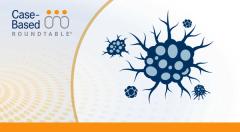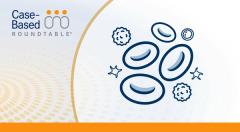
Update Shows Long-Term Benefits of Tagraxofusp in BPDCN
Naveen Pemmaraju, MD discusses the long-term results of the STML-401-0114 trial that demonstrated the benefits of tagraxofusp-ezrs as a monotherapy for patients with blastic plasmacytoid dendritic cell neoplasms.
Episodes in this series

Naveen Pemmaraju, MD, director of the blastic plasmacytoid dendritic cell neoplasm (BPDCN) program in the department of leukemia at The University of Texas MD Anderson Cancer Center, Houston, TX, discusses the long-term responses of patients with BPDCN on tagraxofusp-ezrs (Elzonris).
The results come from the analysis of the landmark phase 1/2 STML-401-0114study (NCT02113982) of the CD123-directed cytotoxin tagraxofusp in 47 patients with untreated or relapsed BPDCN. Of the 47 patients, 32 patients were ultimately given an intravenous infusion of 7 μg or 12 μg per kg of body weight of tagraxofusp as a first-line treatment on days 1 to 5 of each 21-day cycle. The median age of patients on the trial was 70 years old.
Initial results of the study showed a 90% overall response rate (ORR) with 45% of patients going on to receive a stem cell transplant. Moreover, survival rates at 18 and 24 months were 59% and 52%, respectively, but capillary leak syndrome was reported in 19% of the patients and associated with 1 death in each of the dosage level subgroups.
Pemmaraju emphasizes that these results continue to impress several years on and that while overall survival (OS) did not further improve, this treatment remains a strong bridging therapy to stem cell transplant for patients with a rare disease.
TRANSCRIPT:
0:08 | Now, interestingly, 3 years later, we just published the approximately 3-year median follow-up update [of STML-401-0114] in Journal of Clinical Oncology. So that's this year 2022, in which we were able to add in those stage IV patients, which was more of an extended access trial for the patients for the SL-401/tagraxofusp agent. Again, [there was] very respectable, nice, long-term rates, which is a 75% ORR and 57% complete response rate. But interestingly, the OS, although there's a tail to the curve at the data cutoff, it's still showing the median OS was less than 2 years.
0:47 | So, I think the conclusion is no new safety events from long term follow up of tagraxofusp monotherapy [and] at least half the patients were able to be bridged to a transplant. But, in addition to watching out for the capillary leak sort of acutely normally reserved to the first cycle, still, there's room for improvement with OS. And so, I think the future directions of the field based on this seminal study will be to think about sequencing of drugs and combinations, particularly upfront, and then of course the curative potential still of stem cell transplant in the young, fit patient.














































